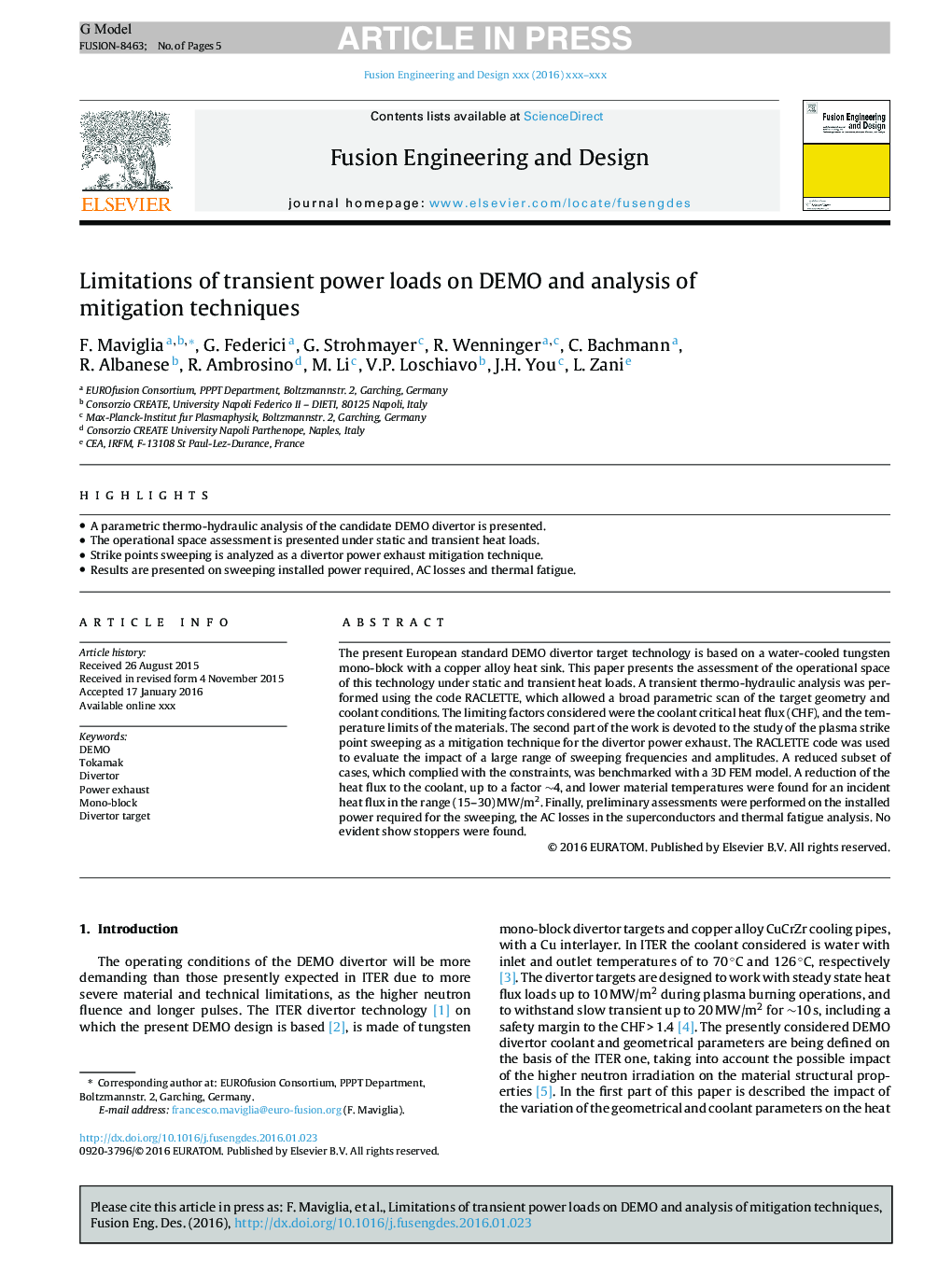| Article ID | Journal | Published Year | Pages | File Type |
|---|---|---|---|---|
| 4921293 | Fusion Engineering and Design | 2016 | 5 Pages |
Abstract
The present European standard DEMO divertor target technology is based on a water-cooled tungsten mono-block with a copper alloy heat sink. This paper presents the assessment of the operational space of this technology under static and transient heat loads. A transient thermo-hydraulic analysis was performed using the code RACLETTE, which allowed a broad parametric scan of the target geometry and coolant conditions. The limiting factors considered were the coolant critical heat flux (CHF), and the temperature limits of the materials. The second part of the work is devoted to the study of the plasma strike point sweeping as a mitigation technique for the divertor power exhaust. The RACLETTE code was used to evaluate the impact of a large range of sweeping frequencies and amplitudes. A reduced subset of cases, which complied with the constraints, was benchmarked with a 3D FEM model. A reduction of the heat flux to the coolant, up to a factor â¼4, and lower material temperatures were found for an incident heat flux in the range (15-30)Â MW/m2. Finally, preliminary assessments were performed on the installed power required for the sweeping, the AC losses in the superconductors and thermal fatigue analysis. No evident show stoppers were found.
Related Topics
Physical Sciences and Engineering
Energy
Energy Engineering and Power Technology
Authors
F. Maviglia, G. Federici, G. Strohmayer, R. Wenninger, C. Bachmann, R. Albanese, R. Ambrosino, M. Li, V.P. Loschiavo, J.H. You, L. Zani,
